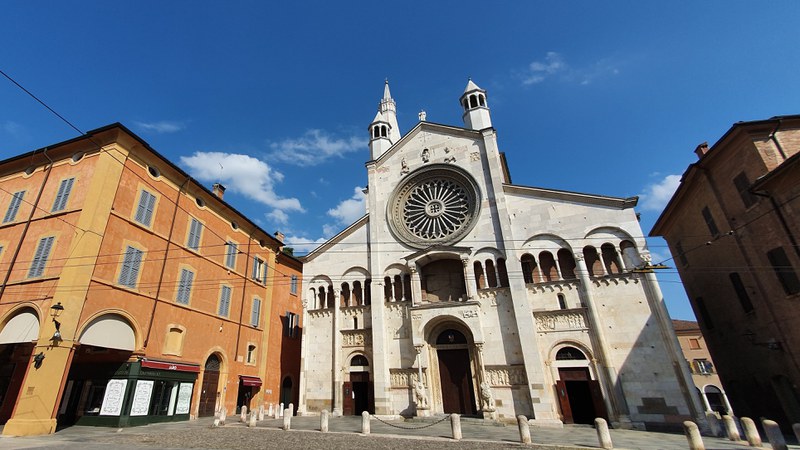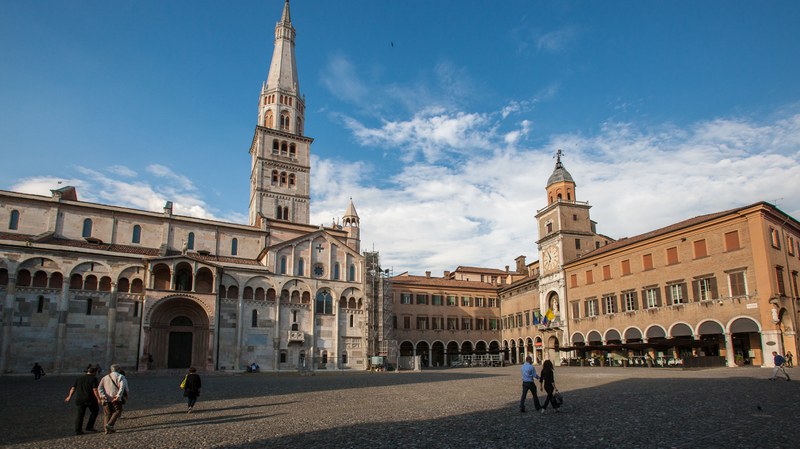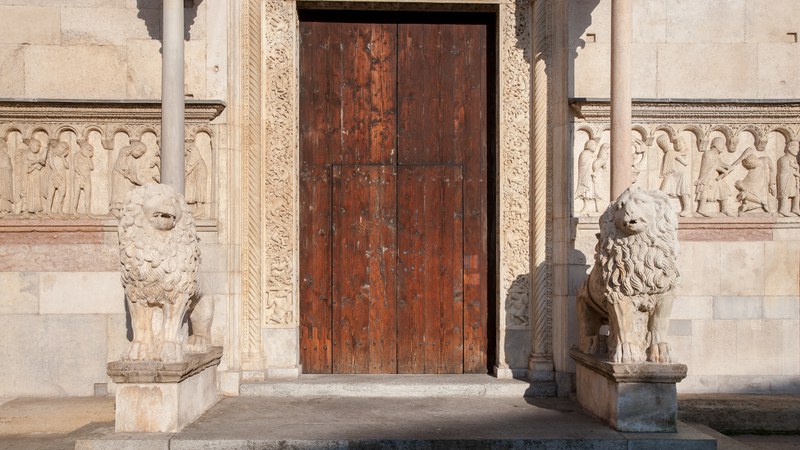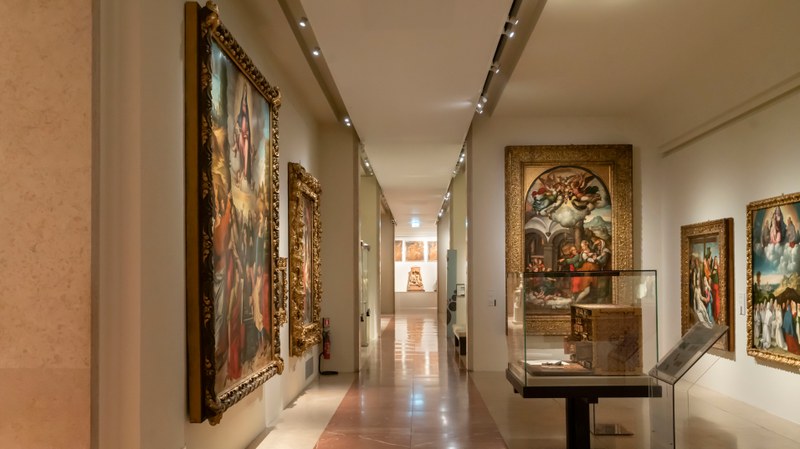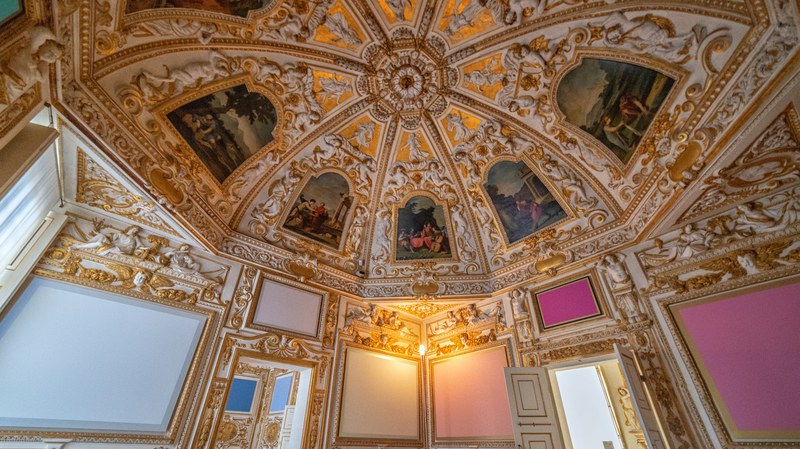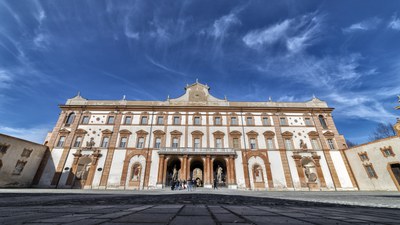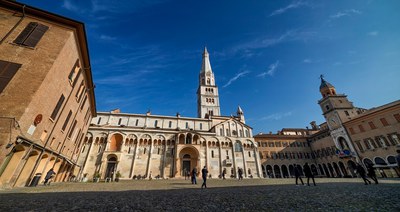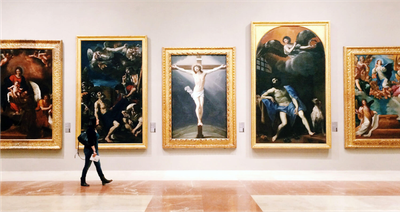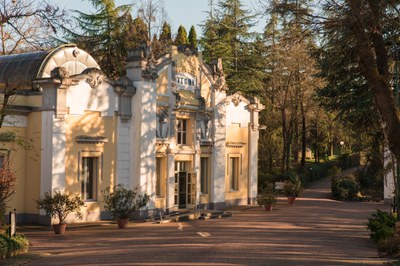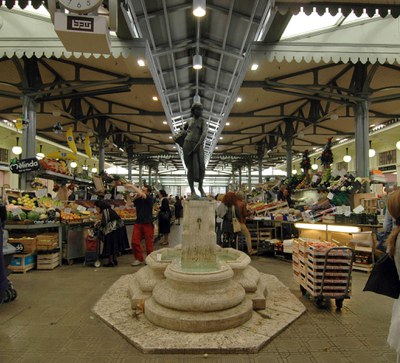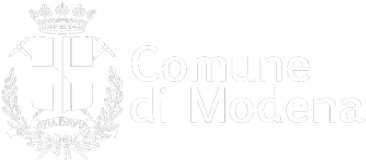On the Trail of the House of Este
For history buffs or anyone who can’t get enough of the lives and times of royals long past, this excursion has more than a few thrills in store. Two days to discover the Dynasty of the House of Este, whose rule extended over much of the Po River valley.
This focus of this itinerary is the history of the Estes in the City of Modena, where Este Duke Cesare arrived in 1598 to make the town capital of the dukedomn after the loss of Ferrara.
Let’s explore, one stop at a time.
Day 1 - morning
We begin our journey in the soul of Modena: the Modena Cathedral, the Ghirlandina Tower, and Piazza Grande. As a group, these buildings were designated a UNESCO World Heritage Site in 1997.
The “wow factor” is guaranteed.

Itinerary
Day 1 - afternoon
From the medieval heart of the city, head toward downtown, at one time the fulcrum of life for the Este duchy. Following historic Via Emilia, which the Este dukes transformed into a primary city artery, you’ll arrive in Largo Porta Sant’Agostino, where Este Duke Francesco III had a Hostel for the Poor built, designed by the architect Pietro Termanini. The “albergo” was intended to provide employment and support for the dispossessed as well as to unite the city’s charitable services under one roof. Work began in 1764 and was completed in 1771. The building was used for various purposes until 1881, when the City of Modena purchased a part of the property and set it aside for what is now the Palazzo dei Musei, home to many of the city’s cultural institutions.

Itinerary
Day 2 - morning
The itinerary continues on Day 2 with a walk through the streets of the historical center. Once you reach Canalgrande, which the nobles of the time considered the official route for promenades, follow it until you arrive at the Church of St. Vincent (San Vincenzo).
From there, continue to the Ducal Gardens and the elegant Palazzina dei Giardini. Built in the 17th century by Este Duke Francesco I as a recreation center for the Este court, today it hosts international exhibitions and programs sponsored by the Modena Foundation for the Visual Arts.
Before completing this third stop, enjoy a lunch fit for a king! You’ll have no difficulty finding a menu in Modena to satisfy even the most demanding palate. Give in to temptation in one of the many restaurants and pubs that serve delicious local specialties. Or you could try them all!
Once you’ve caught your breath, it’s time to make an appearance in the royal court!
We enthusiastically encourage a visit to the Ducal Palace, which is open to the public only on Saturdays and Sundays and exclusively through guided tours that require advance reservations

Itinerary
Day 2 - afternoon
The afternoon is given over to a visit to the vivacious town of Sassuolo, which is also the capital of the ceramics district. The ancient House of Este castle in Sassuolo was transformed by Duke Francesco I into a modern suburban residence for the court.
Be sure to take note of the exterior as well and of the Peschiera, a phenomenal structure, powered by an hydraulic mechanism, that once served as the duke’s fish farm. Today, it recalls a spectacular stage set for a “theater of fountains.” The neighboring grounds were once much larger and served as a hunting reserve for the use of the Este dukes.
From the graceful atmosphere of the Este “Delight” in Sassuolo, the itinerary moves on to Spezzano, a hamlet near Fiorano Modenese and to its castle. This intriguing fortress is linked to the House of Este by history and by a mysterious crime that has never been solved. Beginning in the 14th century, the castle was the scene of bloody conflicts among the Della Rosa, Visconti, Este, and Pio nobles. These clashes came to an end only in 1599 when Marco III Pio of Savoia was assassinated with a harquebus (a 15th-century matchlock gun) by an unknown assailant.
Because there was no direct male heir, the castle fell into the hands of Cesare of Este, and remained in the House of Este for thirty years. In 1629, the fortress, along with the entire fiefdom, became the property of Marquis Guido Coccapani.
You could also consider to end your day at the Terme di Salvarola (Salvarola Hot Springs) for a relaxing break. These waters were known and appreciated even in the times of the dukes. The first written historical docuement concerning Salvarola was found in a Map of Modena dated 1222, mentioned by Girolamo Tiraboschi in his Topographical-Historical Dictionary of the Estensi States. In 1760 Giambattista Moreali, a doctor obtained from Duke Francesco III the perpetual concession to use water thanks "to the discovery and illustration of the health-giving waters of the Modena area". It was Moreali who defined "divine" the Salvarola water for its important therapeutic characteristics and to prescribe it not only for external use, but also as a drink.
And now let’s discover the majesty of the great duchy of the Estes of Modena.




